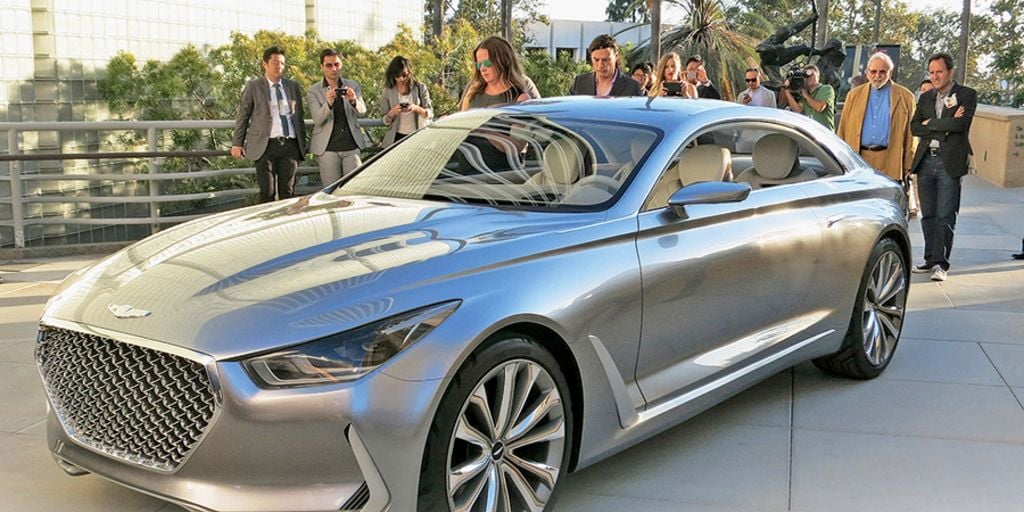(source)Car design is a meticulous blend of artistic vision and engineering prowess, where every curve, line, and detail is meticulously crafted to evoke emotion, ensure functionality, and push technological boundaries. At the forefront of this dynamic field stands Hyundai Motor Company, renowned not only for its innovative vehicle technologies but also for its cutting-edge designs that captivate global audiences. Let’s delve into the talented team behind Hyundai’s car designs, exploring their creative processes, challenges, and the impact of their work on the automotive industry.
The Genesis of Hyundai’s Design Philosophy
Hyundai’s journey in automotive design traces back to its early years when the company focused on producing reliable and affordable vehicles. However, as the automotive landscape evolved, Hyundai recognized the pivotal role design played in shaping brand identity and consumer perception. This realization led to the establishment of Hyundai Design Center, a creative hub dedicated to pushing the boundaries of automotive aesthetics.
Hyundai’s Design Evolution Over the Decades
- 1990s: Hyundai’s designs were functional and economical, focusing on reliability and cost-effectiveness.
- 2000s: The introduction of Hyundai’s “Fluidic Sculpture” design philosophy marked a significant shift, emphasizing fluid lines and expressive forms.
- 2010s: Evolution towards “Fluidic Sculpture 2.0” brought sharper, more refined designs, enhancing Hyundai’s global appeal.
- 2020s: Embracing “Sensuous Sportiness,” Hyundai’s current design philosophy combines emotional design with state-of-the-art technology.
The Creative Minds Behind Hyundai’s Designs
Behind Hyundai’s groundbreaking designs are visionary individuals whose expertise spans various disciplines, from automotive design and engineering to digital modeling and color psychology. Let’s meet some key figures shaping the future of Hyundai’s design language:
1. SangYup Lee – Head of Hyundai Global Design Center
As the chief architect of Hyundai’s design language, SangYup Lee plays a pivotal role in defining the brand’s aesthetic direction. With a background in transportation design and a keen eye for future trends, Lee’s leadership has seen Hyundai’s designs evolve from functional to aspirational.
2. Luc Donckerwolke – Chief Creative Officer
A veteran in automotive design, Luc Donckerwolke brings decades of experience from brands like Lamborghini and Bentley. His influence at Hyundai has been transformative, infusing luxury and performance DNA into Hyundai’s lineup while retaining accessibility.
3. Peter Schreyer – President of Design Management
Known for his tenure at Audi and Kia Motors, Peter Schreyer’s appointment at Hyundai marked a strategic move towards enhancing brand prestige through design. His “Tiger Nose” grille design has become synonymous with Hyundai’s modern identity, reflecting a harmonious blend of aesthetics and engineering.
Also Read : Inside the Hyundai Car Design Studio: A Creative Hub
The Design Process: From Concept to Reality
Creating a Hyundai vehicle begins with a blank canvas and a vision. The design process is a collaborative effort that integrates artistic creativity with technical feasibility. Here’s an overview of how Hyundai’s design team brings concepts to life:
1. Inspiration and Ideation
Designers draw inspiration from diverse sources – nature, architecture, cultural trends – to conceptualize future Hyundai models. Ideation involves sketching, digital rendering, and exploring innovative materials to translate ideas into tangible forms.
2. Digital Modeling and Prototyping
Using advanced digital tools and software, designers create detailed 3D models that simulate the vehicle’s appearance and functionality. Virtual reality (VR) and augmented reality (AR) technologies enable real-time collaboration and immersive design reviews.
3. Design Validation and Testing
Prototypes undergo rigorous testing to ensure they meet Hyundai’s safety, performance, and sustainability standards. Feedback from engineers, aerodynamicists, and consumer focus groups informs iterative design refinements.
4. Final Design Approval and Production
Once the design is approved, it undergoes final adjustments for mass production. Hyundai’s state-of-the-art manufacturing facilities leverage advanced robotics and precision engineering to bring each vehicle to life, maintaining design integrity and quality.
Designing for the Future: Sustainability and Innovation
In an era focused on sustainability, Hyundai’s design philosophy extends beyond aesthetics to embrace eco-friendly practices and innovative technologies. Here’s how Hyundai is pioneering sustainable automotive design:
1. Eco-friendly Materials
Hyundai incorporates recycled materials, bio-based composites, and sustainable fabrics in its vehicle interiors, reducing environmental impact without compromising quality or comfort.
2. Electric and Hydrogen Mobility
Hyundai’s commitment to electric and hydrogen-powered vehicles reflects a future-focused approach to design. Models like the Hyundai Ioniq 5 and Nexo SUV showcase Hyundai’s advancements in eco-mobility, blending performance with zero-emission capabilities.
3. Connected and Autonomous Driving
Hyundai integrates smart technology and AI-driven features into its vehicles, enhancing safety, convenience, and driving experience. The Hyundai Vision FK concept demonstrates Hyundai’s vision for autonomous driving, redefining vehicle interiors and user interaction.
The Impact of Hyundai’s Design Excellence
Hyundai’s design prowess extends beyond aesthetics, influencing consumer perception, brand loyalty, and industry benchmarks. Here are key outcomes of Hyundai’s commitment to design excellence:
1. Global Recognition and Awards
Hyundai’s design achievements have garnered international acclaim, with awards from prestigious institutions like Red Dot Design Awards and iF Design Awards. Recognition reinforces Hyundai’s status as a design leader in the automotive sector.
2. Market Competitiveness and Differentiation
Distinctive designs distinguish Hyundai vehicles in competitive markets, attracting diverse consumer demographics and enhancing market share. Hyundai’s bold design language sets trends and benchmarks for automotive innovation.
3. Consumer-Centric Approach
Hyundai’s consumer-centric design philosophy prioritizes user experience, accessibility, and emotional appeal. Feedback from global markets shapes future designs, ensuring Hyundai vehicles resonate with diverse cultural preferences and lifestyles.
Conclusion: Driving Design Innovation Forward
The talented team behind Hyundai’s car designs exemplifies the convergence of creativity, technology, and consumer insight. From conceptualization to production, Hyundai’s commitment to pushing design boundaries shapes the future of automotive aesthetics and functionality. As Hyundai continues to innovate and inspire, its designs will undoubtedly leave a lasting impression on the automotive industry and global audiences alike.
This article aims to provide a comprehensive overview of Hyundai’s design team, their processes, and the impact of their work, integrating research, examples, and case studies to support key points.
(source)
Originally posted 2024-07-18 07:36:25.
